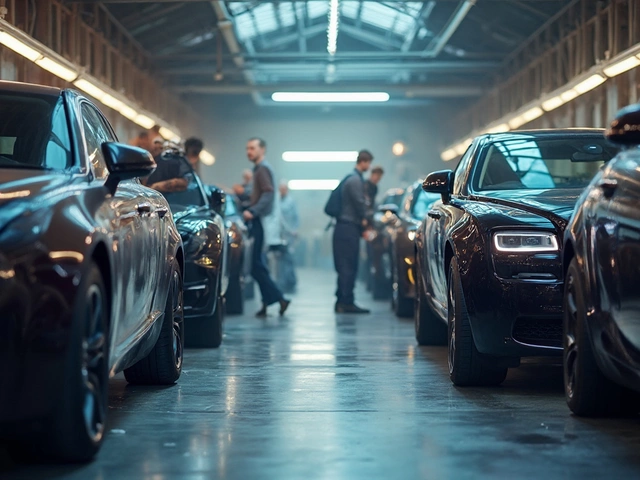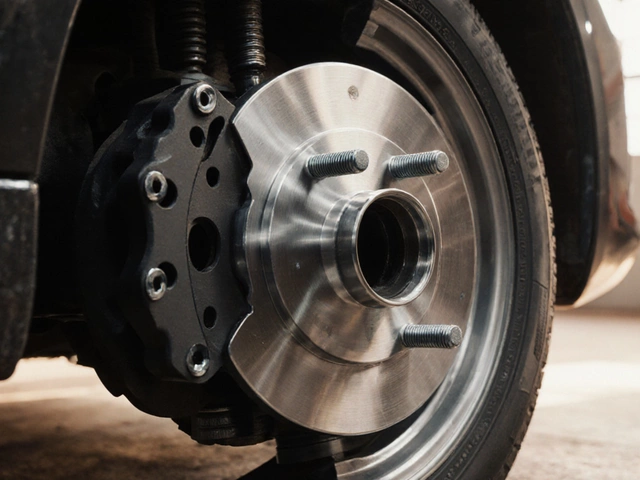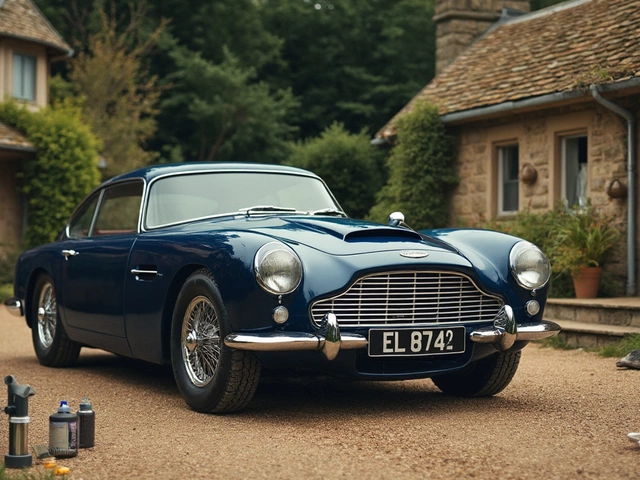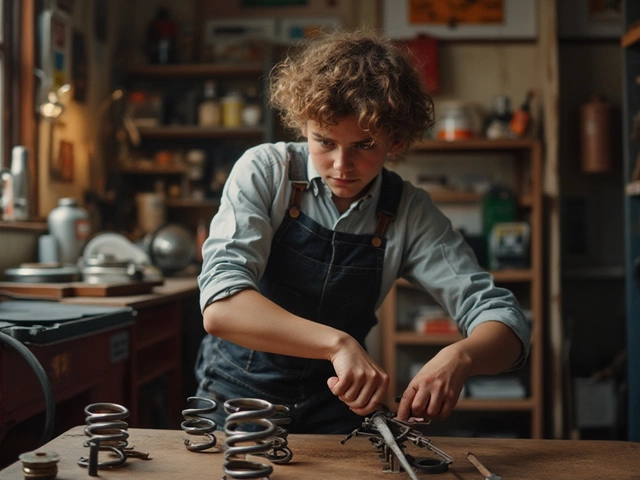You see cars with dark windows everywhere, but ceramic tint isn’t just about making your ride look cooler. This stuff is packed with tech that most regular tints just can’t match. If you’re tired of getting baked in your seat or you worry about the sun messing up your interior, ceramic tint might be the answer.
People hear “ceramic” and think it’s some kind of fragile kitchenware, but car guys know it packs a punch against summer heat and UV rays. Unlike basic dyed or metallic tints, ceramic tint doesn’t fade, bubble, or mess with your phone and GPS signals. It’s almost invisible but blocks heat better than you’d expect.
Costs a little more? Sure. But think of those times you’ve driven home in scorching sun, sweating even with the AC on full blast, or watched your dashboard crack and fade over the years. Ceramic tint takes some of that pain away without turning your windows into black holes. It’s a game-changer, especially if you care about comfort and the long-term value of your car or home.
- What Exactly Is Ceramic Tint?
- Key Benefits You Actually Notice
- How Ceramic Tint Stacks Up Against Other Tints
- What’s Up With the Price?
- Real-World Results: Is It Worth It?
- Tips for Getting the Most Out of Ceramic Tint
What Exactly Is Ceramic Tint?
Alright, let’s clear up what ceramic tint actually is. We’re not talking about thin plastic film you slap on at a bargain shop—this is high-tech stuff made with tiny ceramic particles. Those little particles aren’t visible to the eye, but they make a huge difference. Instead of just coloring your windows, ceramic tint works to block heat, UV rays, and even annoying glare without making your windows super dark.
Unlike regular dyed or metallic films, ceramic tint doesn’t use metal. That's good news because metal tints often mess with your cell signal, GPS, or radio. Ceramic tint is non-metallic and non-conductive, so you won’t get those headaches. Even folks with smartcars running all kinds of tech love ceramic tint for keeping their gadgets working right.
You might be wondering how well it handles heat. Some data helps put it in perspective:
| Type of Tint | Infrared Heat Blocked | UV Protection |
|---|---|---|
| Basic Dyed | ~20% | ~70% |
| Metalized | 40-60% | ~90% |
| Ceramic Tint | 85%+ | 99%+ |
With ceramic tint, you get over 99% UV protection and roughly 85% or more infrared heat blocked—and that’s straight from manufacturers like 3M, Llumar, and Huper Optik. This means your car stays much cooler and, bonus, your skin and your car’s interior both catch way less sun damage.
It’s also super durable. Ceramic tint usually resists fading, bubbling, and scratching much longer than cheap alternatives. So you’re not just getting short-term relief; you’re investing in something that’ll keep working season after season.
One last thing: ceramic tint looks almost clear if you want it that way. You don’t have to walk around with limo-dark windows unless you actually want that vibe. It’s a solid upgrade over old-school films, and the science backs it up.
Key Benefits You Actually Notice
This is where ceramic tint proves it’s not just marketing hype. The whole point of shelling out more for this tint is the straight-up comfort and protection you get—even if you can barely see it on your windows.
- Ceramic tint is a champ at blocking heat. It reflects up to 60% of solar energy, which means your car cools off faster, your AC isn’t working overtime, and you’re not getting that sweaty shirt stuck-to-the-seat feeling every time you park outside. People with ceramic tint will tell you: that difference in cabin temperature is real.
- UV protection is huge here. Ceramic tint filters out more than 99% of harmful UVA and UVB rays. UV rays don’t just mess up your dashboard and seats—they’re rough on your skin too. So, you’re actually protecting yourself and your car’s interior from fading, cracking, and all that other ugly sun damage.
- No weird signal interference. Metallic tints can make your GPS and phone do weird things. Not a problem with ceramic tint. If you use Bluetooth for calls or navigation, you won’t get those annoying drops and glitches.
- Better glare control. Glare on the road can make you miss stuff, and let’s be honest, it’s annoying. Ceramic tint cuts down on glare, so you get a clearer view, even on bright days. That means you’re less likely to squint or miss something important on the road.
- It actually lasts. Cheaper tints often bubble, turn purple, or peel after a year or two. Ceramic tint sticks around, looking fresh for years without those problems. One install, done right, and you don't have to mess with it again for a long time.
It’s those small daily things—like not burning your hand on the steering wheel, keeping your skin safer, or just feeling comfortable during summer road trips—that really add up and let you see the value.
How Ceramic Tint Stacks Up Against Other Tints
If you’ve ever looked at all the tint options out there, it can get confusing fast. Ceramic tint isn’t the only option—regular dyed, metallic, and even carbon films are out there fighting for your attention. So, how does ceramic tint actually stand out?
First, let’s nail down the basics. Here’s how some of the top tint types perform on what matters most:
| Type | Heat Rejection | UV Blockage | Signal Interference | Durability |
|---|---|---|---|---|
| Dyed Tint | Low | Moderate | None | Can fade/bubble |
| Metallic Tint | Decent | High | Can block radio/GPS | May peel |
| Carbon Tint | Good | Very High | None | Long-lasting |
| Ceramic Tint | Excellent | Up to 99% | None | Top-notch |
Here’s what stands out:
- Heat Rejection: Ceramic tint cuts heat better than the others. Some brands knock out over 50% of total solar energy, and drivers actually feel the inside cool down—faster AC, less sweat, less wear on your vents.
- UV Protection: Regular dyed film will block some UV, but ceramic can block up to 99%. That’s a big deal for your skin and your seats—no more toasted steering wheels or cracked dashboards.
- Signal Interference: Metallic films can mess with your radio, GPS, and even your keyless entry. Ceramic is a total non-issue here. Your Bluetooth, phone, and Nav all work just fine.
- Durability: While dyed tints can fade and bubble, ceramic tint is built to last. Most brands have warranties for years, and you don’t see that annoying purple look down the road.
If you want tint that does more than just make your car look good, ceramic is on another level. It’s not just about looks—it really delivers on performance where it counts.

What’s Up With the Price?
If you’ve checked out tint shops, you’ve seen that ceramic tint costs way more than regular dyed or metalized options. The sticker shock is real: ceramic tint usually runs anywhere from $400 to $800 for a full car, while entry-level tints can be half that or less. The big question is, why pay extra?
The answer comes down to the technology and materials. Ceramic tint uses advanced nano-ceramic particles that don’t just darken your glass—they actually block more heat and UV rays. This takes fancier tech to make, and those particles are a lot pricier to produce than standard dye or metallic layers. Plus, ceramic tints tend to last way longer and resist fading, so you’re not back at the shop in a couple years redoing the work.
For a clearer idea, check out this average price breakdown for an average-sized sedan:
| Tint Type | Typical Cost (Full Car) | Average Lifespan | Infrared Heat Blocked |
|---|---|---|---|
| Dyed | $120 - $250 | 2 - 5 years | 15% - 25% |
| Metalized | $200 - $350 | 5+ years | 35% - 50% |
| Ceramic | $400 - $800 | 10+ years | 60% - 85% |
You’re not just paying for the tint itself. Professional installation is key since ceramic film is less forgiving during application. A bad tint job means peeling, bubbles, and a waste of your investment. Good techs, quality materials, and a warranty bump up the price, but they also mean you won’t have issues down the road.
If you drive a lot, live somewhere with serious sunshine, or plan on keeping your car for the long haul, ceramic tint pays for itself in comfort and keeping your interior looking decent. It’s one of those upgrades that doesn’t shout for attention, but you’ll notice every single hot afternoon.
Real-World Results: Is It Worth It?
If you’ve ever sat in a car with and without ceramic tint on a sunny day, the difference is night and day—literally. With ceramic tint, people often find the cabin stays cooler, and you don’t feel that harsh, burning sensation on your skin. It’s not just marketing: a lot of drivers and homeowners see a temperature difference of 10 to 15 degrees Fahrenheit. That means your AC has to work less, so you save a bit on gas or electricity too.
Check out some legit head-to-head numbers from real tint installers who tested ceramic tint on identical cars:
| No Tint | Regular Tint | Ceramic Tint | |
|---|---|---|---|
| Heat Blocked (%) | ~0% | 35-50% | 60-80% |
| UV Ray Blockage (%) | ~0% | 90-95% | 99%+ |
| Cell Signal Interference | None | Possible | None |
Some folks are skeptical at first because of the price bump, but after a few weeks, most don’t regret it. You protect your dashboard, your seats, and even your skin (yeah, UV rays sneak through clear glass). For parents, it means less whining from sweaty kids. For pet owners, like me with Gizmo the cat riding shotgun now and then, it’s peace of mind knowing the back seat won’t turn into a furnace.
If you hate cranking your AC or seeing those cracks appear in your leather, ceramic tint pays for itself over time. You get better heat control, protection from 99% of those skin-roasting rays, and no annoying static or GPS glitches.
The only downside? You’ll probably wish you did it sooner once you feel the difference at a red light on a hot afternoon. If you’re spending money on tinting anyway, ceramic gets you the real upgrade—less sweat, more comfort, and your ride still looks slick.
Tips for Getting the Most Out of Ceramic Tint
Getting ceramic tint installed is just the first step. Want to make sure you’re actually getting your money’s worth? Here’s what you’ve got to know.
- Pick a certified installer: Not all tint shops use premium ceramic film, and some cut corners. Look for shops with solid reviews and dealers listed on the film manufacturer’s website. Cheap work usually means you end up with bubbles, streaks, or peeling next summer.
- Check the specs: Legit ceramic tints block up to 99% of UV rays and about 50-60% of solar heat. Ask for documentation or test results. If they can’t show you ratings for total solar energy rejection (TSER), walk away.
- Wait before rolling down windows: After tint is applied, let it cure for at least two or three days. Rolling down windows too early messes up the edges and can cause peeling. Some shops recommend even longer if it’s humid.
- Keep it clean, but gentle: Avoid ammonia-based cleaners—they’ll damage the tint. Use a microfiber cloth and a simple water-and-vinegar mix. This keeps your tint crystal clear without scratching.
- Know local tint laws: Some states are strict about how dark you can go, especially on the driver’s side. Check your state’s limits on Visible Light Transmission (VLT) so you won’t get nailed with a ticket.
Here’s a quick table showing common ceramic tint performance compared to standard dyed tint:
| Tint Type | UV Rejection (%) | Total Solar Rejection (%) | Signal Interference |
|---|---|---|---|
| Ceramic Tint | 99 | Up to 60 | None |
| Dyed Tint | Approximately 40 | About 30 | None |
| Metallic Tint | 90-95 | 35-40 | Possible |
Let your installer know if you have pets like my cat Gizmo, who loves sitting on the back seat and staring out the window. If you choose too dark of a tint, your furry friend might end up missing those good window-watching moments. And if you want the best ceramic tint for a long haul, don’t forget to save your warranty paperwork—quality brands have 7- to 10-year (sometimes lifetime) guarantees. Get the right tint, treat it right, and you won’t look back.






